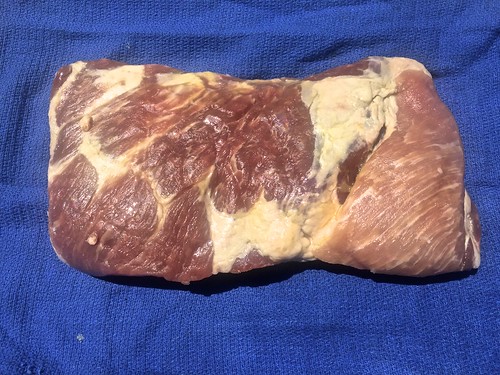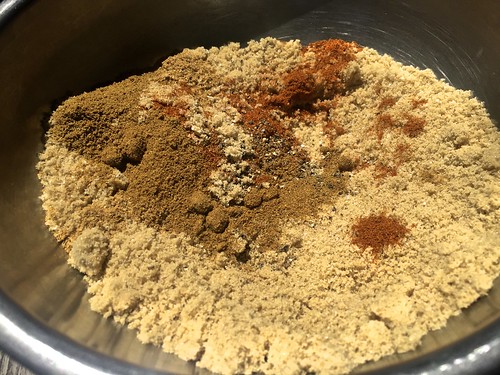I am reprising my July 4th post from previous years. This year is different. COVID isn't over, so we'll practice social distancing even as we pass around containers of food. We're all shell shocked by the events of 2022. The brutality of Russia's war against the people of Ukraine. The revelations of the Select Committee to Investigate the January 6th Attack on the U.S. Capital. The actions of the Supreme Court.
Yet, even with all that, we are still grateful for our country and its democracy. We consider ourselves blessed to be living here with our family and friends, in our communities. To celebrate we will share a meal, watch fireworks and commit ourselves to get out the VOTE.
Wishing you all a great 4th of July. And now, let's COOK!
We're having a party. On July 4th we'll gather in the park opposite our local high school (Pali High) to eat, catch up and watch fireworks. Everyone will bring food and drinks to share and a sweater because when the sun goes down, it gets chilly.
We have been doing this for so many years, I'm not certain when we started. Over the years sometimes the group grows to almost thirty. Sometimes a handful of friends shows up. It all depends on what day of the week the holiday falls. We've noticed that when the 4th falls on a weekend, there isn't enough time to travel out of town, so our group swells. This year, the 4th is on Thursday, so our group will be more intimate. Big or small, the gathering is fun.
Everyone is asked to bring a favorite food. Something special. This year I'm making favorite dishes, ones designed to share at a picnic or at buffet-style fireworks watching party.
I love my
kimchi chicken wings (see below), sticky sweet with heat, moist and tender. Nothing is better except fried chicken the way chef
Wes Whitsell (Hatchet Hall) showed me for a cooking video we did last month. His fried chicken is crispy and moist. For the cooking demonstration he made wings, thighs and legs. He doesn't like breasts because they don't have enough flavor. I pretty much agree. For my pot luck contribution, I'm making cut apart wings and legs, the easiest parts to eat at a picnic.
I'm also making
carrot salad with golden raisins soaked in lemon juice & seasoned with black pepper, Yukon gold
potato salad with charred corn & parsley, a
charred corn & vegetable salad,
roasted beet salad,
garbanzo bean salad with charred onions & Lacinato (purple) kale,
salt boiled broccoli florets and a buttermilk custard pie I saw Martha Stewart demonstrate on her PBS show.
I'll also make an
Italian parsley salad with chopped vegetables and pitted olives and a
Little Gem lettuce salad with carrot rounds and feta cheese, served with whole wheat lavash.
Only recently did I discover Little Gem lettuce. First, at
Glatt, a kosher market, on Pico east of Robertson and then at the Wednesday
Santa Monica Farmers Market at the
Garden of Organic stand. At first I thought they were "baby" romaine lettuces. They have a cleaner, crisper flavor, with less water and more crunch. Wrapped in a damp kitchen towel and placed into a plastic bag, the heads will keep fresh in the refrigerator for three weeks.
Here's the recipe I'll use for the 4th (which is exactly the recipe I use when I make the salad at home except sometimes I'll trade out the feta for blue cheese).
Crispy Little Gem Lettuce SaladWhen making the salad, leave the leaves whole so they don't wilt.
For the olives, use any kind you enjoy. We like Castelvetrano Green olives, which can be found pitted for easy use, although olives taste best when not pitted.
Serves 4
Time to prepare: 20 minutes
Ingredients2 heads Little Gem Lettuce, leaves removed whole, washed, pat dried
1 large carrot, washed, ends removed, peeled, cut into thin rounds
1 large tomato, stem end removed, washed, pat dried, cut into dime size pieces
1 cup pitted olives, roughly chopped
1 scallion, ends removed, washed, brown leaves discarded, cut into paper thin rounds (optional)
1/2 cup feta, pat dried, crumbled
1 medium avocado, washed, peeled, pit and any brown spots removed, cut into dime sized pieces
1/2 cup homemade croutons (optional)
2 tablespoons olive oil
1/4 cup balsamic vinegar, reduced over a low flame to 2 teaspoons, cooled
Sea salt and freshly ground black pepper to taste
DirectionsLay the Little Gem leaves in the bottom of a serving bowl. Sprinkle on the carrots, tomatoes, olives, scallions (optional), feta, avocado and croutons (optional).
Just before serving, season with sea salt and black pepper, drizzle on olive oil and reduced balsamic vinegar.
Serve with a knife and fork.
Kimchi Chicken Wings
Chicken wings are sold whole, the drumstick only or the two-bone part. If you prefer one part of the wing over another, buy only those. The whole chicken wing will be less expensive and the wing tips can be roasted and used to create stock.
Do not use the whole chicken wing, which is too difficult to eat.
I prefer preservative-free kimchi. I have been enjoying Mommy Boss napa cabbage kimchi. Read the label carefully because there are different kinds of kimchi, I would recommend only using cabbage kimchi without dried shrimp.Serves 4
Time to prepare: Marinate overnight, prep 20 minutes, bake 60 minutes
Ingredients
2 pounds chicken wings
1 cup kimchi, without preservatives
1/2-3/4 cup brown sugar, depending on taste
1 medium yellow onion, washed, pat dried, peeled, root and stem removed, thin sliced from root to stem
1/4 cup kimchi liquid
1 tablespoon olive oil
DirectionsThinly slice kimchi and mix together with onion slices, brown sugar, kimchi liquid and olive oil.
Add chicken wing parts to marinade. Mix well. Place in a covered bowl or sealed plastic bag. Refrigerate over night.
Preheat oven to 350F.
Prepare a roasting pan. Line the bottom with aluminum foil. Because the drippings are sticky (and delicious!) I place a Silpat sheet on top of the aluminum foil so I can easily retrieve the bits of caramelized onions and kimchi. Place a wire on top of the aluminum foil and Silpat sheet.
Place the chicken wings on top of the wire rack, allowing space between each part to allow for even cooking. Reserve the liquid marinade with the onions and kimchi.
Place wings into preheated oven.
While the wings are roasting, place the reserved marinade into a small sauce pan and reduce the liquid by 1/2 over a low heat.
Remove wings from the oven after 30 minutes.
Turn wings over and baste with reduced marinade, placing onion and kimchi slices on each wing.
Return to oven.
After 30 minutes, remove and check for doneness. The onions and kimchi slices should be lightly browned and beginning to crisp. The wings should be tender. If not, return to oven and continue baking. Check every 10 minutes for doneness.
Serve hot as an appetizer or on top of steamed rice. The wings are delicious at room temperature, perfect for a picnic. However they are served, have a good supply of napkins available.




































